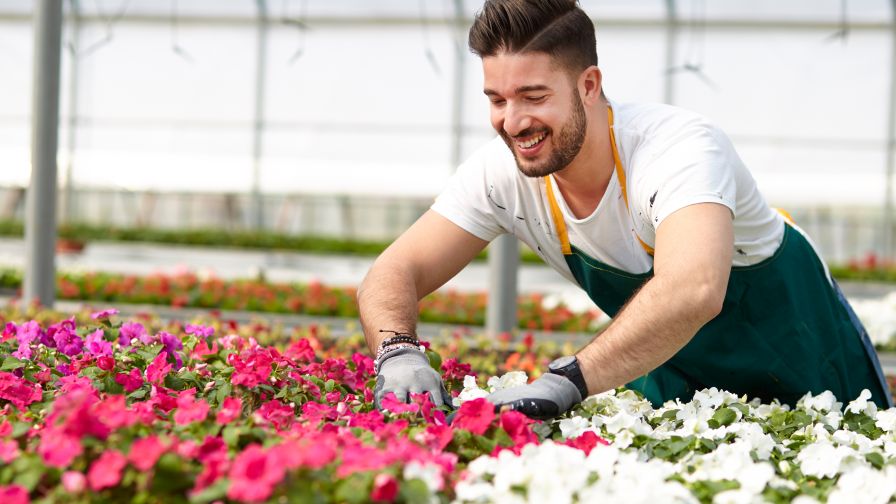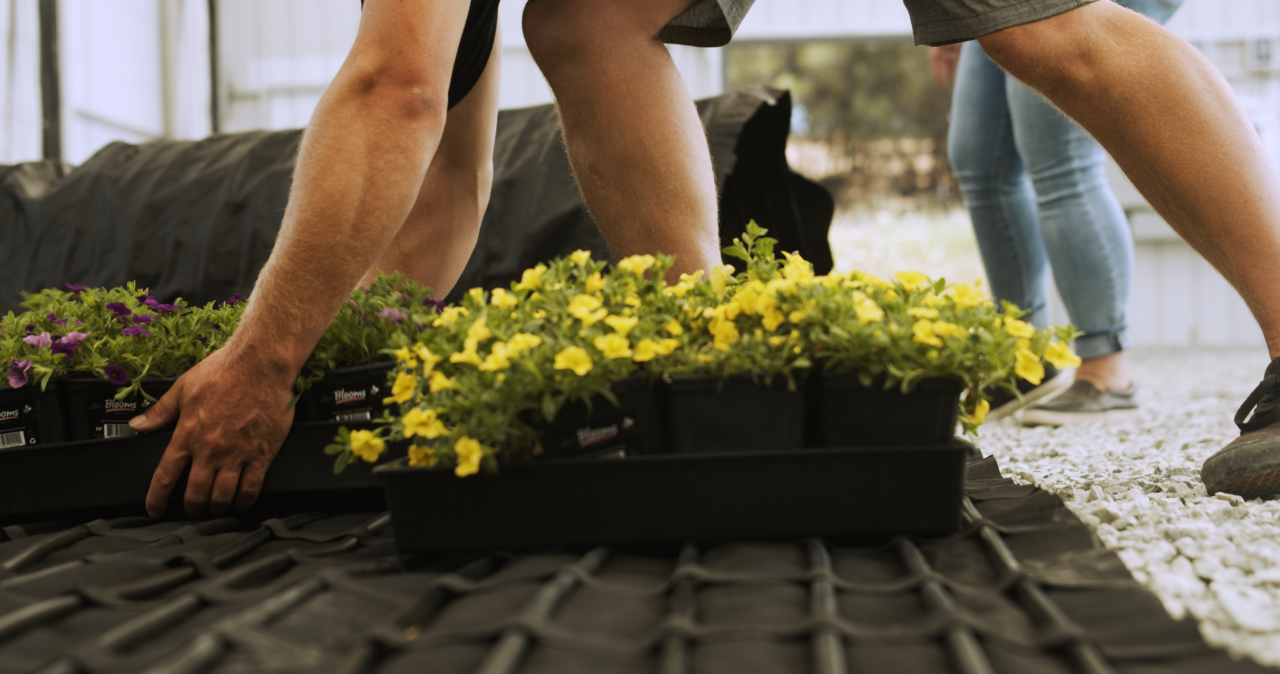Get to Know Beneficial Insectary’s New U.S. Product Leader

Cody Seals, Beneficial Insectary
Beneficial Insectary recently appointed Cody Seals as U.S. Product Manager. A graduate from the University of Tennessee (UTK) Entomology and Plant Pathology Department, Seals began his journey into plant pests by scouting for invasive insects and diseases among Tennessee’s nurseries and greenhouses. While pursuing a bachelor’s degree in Plant and Soil Science from Middle Tennessee State University, he began working for UTK’s Extension program in conjunction with USDA’s Animal and Plant Health Inspection Service. Upon completing his bachelor’s degree, UTK offered an opportunity to attend its master’s program for entomology and plant pathology, focusing on determining the ecology of cannabis produced in the Southeast.
Once Seals completed his master’s degree, he remained in the cannabis space and began working with growers across the southeast to navigate this new crop. He continued in that role until most recently, leaving his IPM Specialist position at a significant greenhouse in Nashville to join the Beneficial Insectary team as a U.S. Product Manager. In his new role, Seals will oversee the research and market development of many biopesticides and other microbial inputs that are currently available and new products in the pipeline.
Greenhouse Grower recently caught up with Seals to learn more about some of the areas where he’ll be focusing his time.
Greenhouse Grower (GG): How did your previous experience prepare you for this new role?
Cody Seals: Being able to work with farmers and researchers across the U.S. has been an incredible, rewarding experience that’s allowed me to immerse myself in agriculture. Having been given the opportunity to study cannabis ecology as a graduate student, it enabled me to see the ground floor of this emerging industry. With cannabis being a new crop, many of the farmers and producers I worked with were involved in other agriculture systems such as livestock, row cropping, ornamental, and/or tobacco production. Working with these groups and seeing them implement the skills they’ve garnered across multiple sectors has let me pull from experiences that range the agricultural gauntlet.
GG: What are the some of the biggest issues or concerns you’ve heard from the growers you work with, and how do you plan to help them deal with these issues?
Seals: For cannabis, the most prevalent issue we run into is likely a lack of readily available resources tailored to that grower’s region. When a farmer in the Southeast wants to find education related to cannabis production, they typically find research that’s focused on West Coast production, which is vastly different in climate, producing incompatible results for pest management and greatest performance. With other crops, local universities, Extension groups, and private researchers have amassed years of research into the specific regions where they reside creating invaluable educational resources for farmers to pull from when developing their farm plans.
Many crops have essentially entered their tweaking phase, a point where we’ve gotten the mechanics to a science and now, we just have to tweak the crops, hopefully improving performance with each modification. I hope to continue working with farmers to develop those strategies for each region, or microclimate, allowing us to work towards best practices for cannabis whether you’re growing indoors in the Southeast, outdoors in the Midwest, or a greenhouse in Alaska.
GG: What are the biggest challenges this industry is currently facing? Conversely, what are some of the biggest opportunities on the horizon?
Seals: The biggest challenge currently facing the industry is a seven-headed hydra called “lack of federal legality.” Many of the challenges that are being battled currently can be traced back to a lack of federal structure affecting businesses even at a state level. Banking is difficult if not impossible, and there isn’t consistency in how states build out their framework, which creates different licensing tiers, costs, and allowed production sizes. In some states they allow the use of certain EPA-registered products, and in others you can’t use anything that isn’t FIFRA (Federal Insecticide, Fungicide, and Rodenticide Act) exempt. Testing for contaminants such as pesticides, heavy metals, or mycotoxins is not consistent, both for governmental guidelines and testing labs. Then, there are still states where it’s simply illegal to possess the kind of cannabis found in adult-use states, whether it’s CBD or other.
While all of this seems troublesome, the silver lining does lie in the difficulty. This is a burgeoning industry with yet unseen potential. As new states come online, the opportunity to enter that state as the industry begins is a massive opportunity at gaining early market share. If a business can navigate these waters now and develop standard operating procedures that work inside a growing industry, that changes state to state if not city to city, they will be more prepared and already established for a better refined, more mature market.
GG: Looking ahead, what role can you play in moving this industry forward?
Seals: As this industry moves forward, I hope to contribute in the way of facilitating growers through bridging research with real-world applications. I enjoy networking with producers in almost any facet of agriculture and thrive on learning from them the issues or problems they may be facing in their respective fields and how they currently remedy those challenges. As I dive deeper into my role at Beneficial Insectary, I’ll have the opportunity to connect with growers who have possibly not had exposure to beneficial organisms as a pest-fighting strategy. The incorporation of beneficials into a farming plan can help alleviate synthetic chemical usage, reduce input costs, and produce a healthier, better yielding crop. The new products coming down the biocontrol agent pipeline are truly exciting and I’m eager to begin sharing them with producers across the country.
GG: As the cannabis industry moves forward, do you see it angling more toward greenhouse production or indoor/warehouse production, and why?
Seals: As the cannabis industry moves forward, I see more production being geared towards high-tech greenhouse more so than indoor. When built appropriately for the intended crop, a well-constructed greenhouse that features environmental controls can produce immaculate crops. An indoor facility will too, but likely at a greater cost to the facility increasing the production cost for the finished goods. The buildout for a greenhouse is less than a new cannabis-focused indoor facility, and power consumption will be lower, reducing the cost of a greenhouse finished product. Greenhouses also offer certain intrinsic benefits such as the ability to passively cool and heat; an indoor facility’s lifeline is its HVAC system. If that goes out for an extended period, so does the crop. Lighting isn’t cheap to install or run, and a greenhouse offers the benefit of our solar system’s largest lightbulb, the sun. There’s even the added benefit of experiencing more beneficial organism occurrence in greenhouses compared to indoor facilities.
Geography will likely play a role in the type of facility a business chooses. Certain areas might find an indoor facility to be more appropriate than a greenhouse, and others may continue to produce their crop outdoors in regions that see little rain. When we look at the industry in 20 years, the square footage winner will likely be greenhouses utilizing new and emerging agriculture technologies focused on sustainable crop production.










